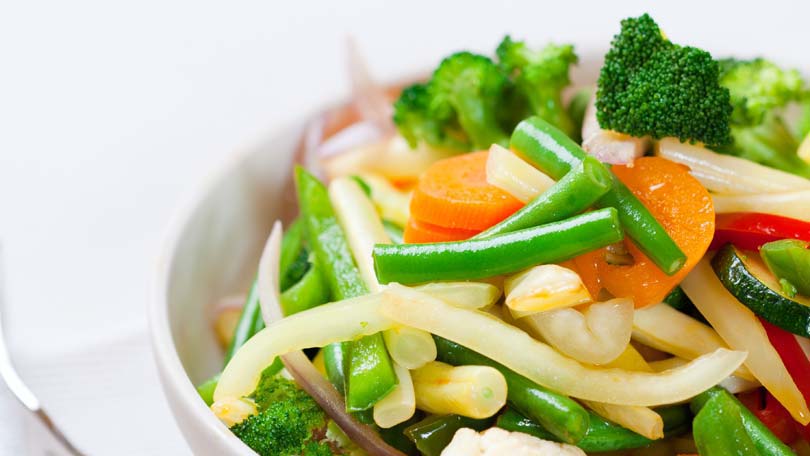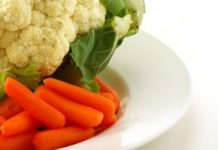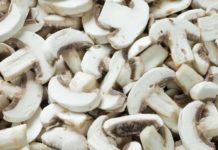
It seems you just can’t escape from food controversies anymore. No matter what scientific evidence is presented, someone will say that’s wrong, or it’s a Big Food Company conspiracy. Honestly, some of these culinary fear-mongers make UFO Conspiracy whackos seem almost well-adjusted. It seems that is all we hear, now. Things like, “Genetically-Engineered Foods (GMOs) are bad for you (even though we’ve been eating genetically-engineered foods for over 3000 years. The only difference is that we used to do it by selective-breeding, and now we do it by directly manipulating the genes. The results are the same…)”, “Meat is bad for you (even though meat is one of the few single ‘complete’ foods that humans can exist on…)”, “ Vegetables are bad for you (even though without them, you have to use valuable muscle-building proteins for energy, and raw materials, not to mention fiber….) “, yadaah, yadaah, yadaah…… The most ridiculous controversy I have heard recently is steaming vs. boiling vegetables.
It may seem a bit obvious, but to delve into this subject, we need to understand what cooking is, and isn’t. To start with, we can kill the myth that raw foods are the human natural diet, and are best for us. This is pure rubbish. There are only a very few foods that humans can efficiently digest, mostly some fruits, nuts, and raw meat. There are a few vegetables that humans can use raw, but they are hard on the digestive system. Most of the other things we eat are inedible in a raw state, such as potatoes, rice, most grains, most beans, and some are even toxic to humans in a raw state, such as kidney beans, and rhubarb. Early on, Homo erectus discovered that cooking food greatly expanded the available sources of foods they could use, and ensured our survival through many difficult times, such as droughts, and Ice Ages. It also allowed us to colonize the entire planet, rather than just the African savannahs.
Cooking is the process of transferring heat energy into the tissues of food, causing various chemical reactions within it, effecting the texture, taste, and digestibility. The heat breaks down some chemicals, and renders them into more easily assimilated forms. A loss of a small amount of nutrients is unavoidable, because according to physics, you can’t get something for nothing. But the trade-off between a slight loss of nutrients, and the more easily digested, and wider range of food available is more than worth it. All cooking results in a loss of nutrients, and food cooked to equal degrees by any cooking method will lose the same amount of nutrients, whether it is fried, boiled, steamed, or baked. Heat is heat, period. The differences in cooking methods are due to the absorption, or dehydration, of moisture, oils, and fats used in the processes.
Two of the most heat-effected nutrients are folic acid, and Vitamin C. One of the favorite quotes by the Pro-Steam camp is that a USDA study showed that steaming resulted in a loss of 15% of the folic acid, and Vitamin C, while boiling results in 25%, and 35% respectively. But the fallacy in this argument is that the study did not take into account that the boiling water could be used as well as the vegetables. The extra loss from boiling is due to the nutrients leaching into the water. They haven’t gone anywhere. You can use the liquid as a base for stock, or sauces, and recover the nutrients easily. Chefs and savvy cooks seldom toss out leftover liquids.
Another thing the pro-steamers ignore is the fact that steamed vegetables are usually cooked to a much lesser degree than boiled vegetables. Most veggies are steamed until they just start to get tender. Boiled vegetables are usually cooked until they are done all the way through. And there are vegetables that simply do not respond well to steaming. Potatoes get sticky, starchy, and very unappealing, and trying to steam raw beans could actually be dangerous. Steamed tomatoes turn quickly to mush (although they can be used this way). The veggies that respond the best to steaming are fibrous, and leafy, such as cabbage, brussel sprouts, cauliflower, broccoli, carrots, ear corn, celery, etc…
Someone once said that if you tell a lie long enough, people will accept it as the truth. A perfect example of this is the myth that you can’t over-cook food by steaming it. This fallacy has persisted for decades (although I don’t know why). You can disprove this yourself very easily. Fire up your steamer and put some fresh broccoli in it. Cover it a leave for an hour or two. When you come back and open the steamer, all you will have is a greenish, mushy mess. There is no cooking method that is free from the dangers of ruined food, due to inattention, or incompetence.
So the choice on steaming vs. boiling vegetables comes down what you are trying to accomplish. Steamed veggies taste different than boiled, but not necessarily better. It depends on what you want. No food on the planet is more nutritious, and gets more out of the ingredients, than a pot of soup. Ounce-for-ounce, it has the most nutrition of anything you can eat. But steamed vegetables do tend to retain more color and texture, so if you are wanting some bright-green brussel sprouts to accent the colors of your poached salmon, then steaming is the way to go. A few bright orange steamed carrots would also look good. Broccoli is usually steamed to retain the bright-green color, which quickly turns to a dull olive-drab green when boiled due to the chlorophyl leaching into the water.
The bottom line is to cook your food the way you like it. Most meals contain way more nutrients than you require, anyway, so I wouldn’t sweat the small amount you may lose to a particular cooking method. You will most likely make it up with the addition of bread, butter, side-dishes, dessert, and whatever you drink with your meal. As far as I know, no one has died, or had any serious health issues directly attributed to steaming, or boiling vegetables.





